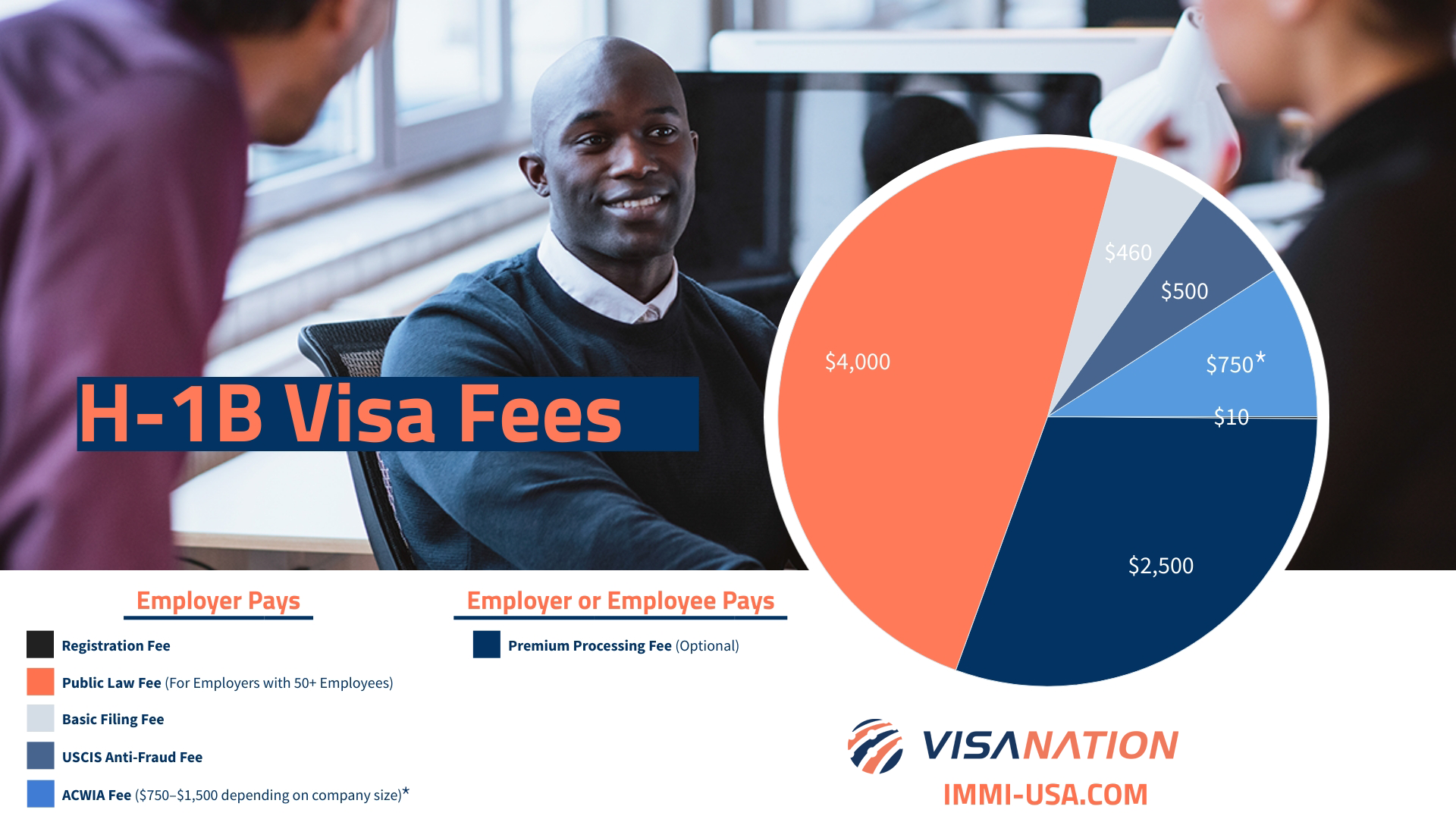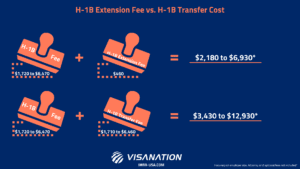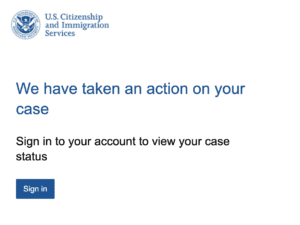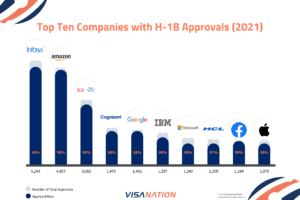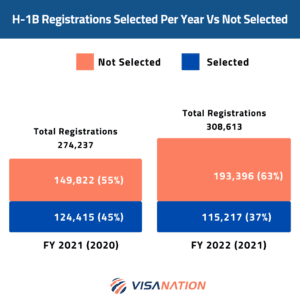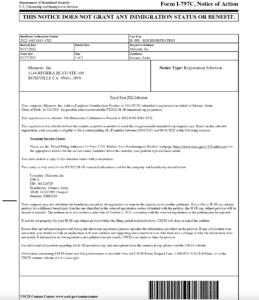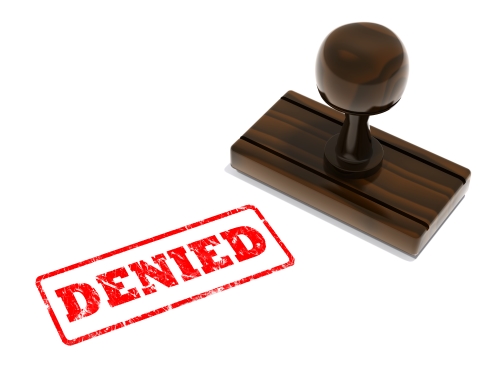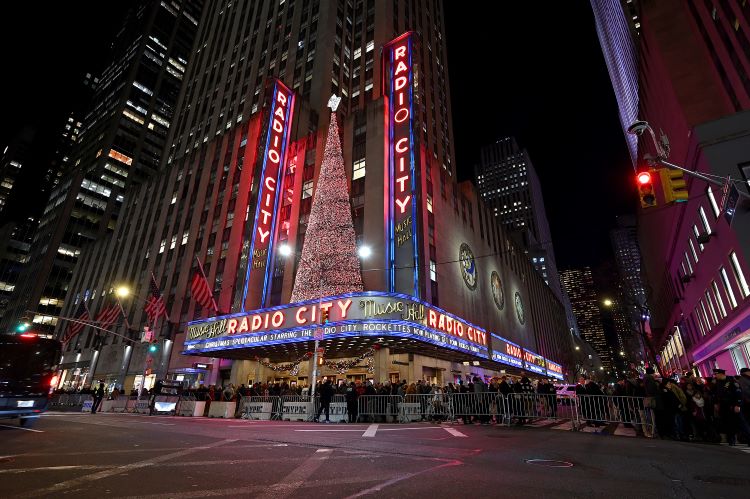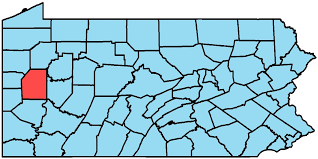How Much Does It Cost in 2023?
Understanding the ins and outs of the most popular U.S. work visa can save you both time and money. The H-1B visa has several unique fees that set it apart from other nonimmigrant visas. Knowing the H-1B fees, how to pay them, and who is responsible for them is essential to avoid simple errors. If you are filing for the H-1B visa 2023 season, this post will help you understand H-1B transfer costs, premium processing fees, extension fees, and more.
How Much Does it Cost to Apply for H-1B Visa?
The H-1B visa costs between $1,700 and $6,500 in 2023. The precise amount of how much it will cost you will depend on many variables like optional fees, attorney fees, and employment criteria. It is essential to mention that although all H-1B applicants have to pay the $10 registration fee, only applicants that were selected during the lottery would have to pay the rest of the fees mentioned above. With that said, it’s still necessary for all parties to be completely aware of the H-1B filing fees charged. Therefore, we strongly recommend having VisaNation Law Group conduct a thorough case evaluation before entering the lottery to ensure you meet the wage eligibility requirements, attract eligible candidates, submit your registration correctly, etc.
H-1B Fee 2023 Table
Below you will find the up-to-date outline of H-1B costs:
|
Premium Processing (optional) |
||
|
ACWIA Education and Training Fee |
$750 (less than 25 employees) $1,500 (more than 25 employees) |
|
- Registration fee: $10
- Standard Fee: The standard H-1B filing fee is $460 for the I-129 petition. This H-1B fee is also applicable to H-1B transfer costs, refilings, H-1B amendments, and renewals.
- American Competitiveness and Workforce Improvement Act (ACWIA) Training Fee: For employers who have 1-25 full-time workers, the fee is $750. For employers with 26 or more full-time employees, the fee is $1,500. Some organizations are exempt including non-profits with affiliations to educational institutions and governmental research organizations.
- Fraud Prevention and Detection Fee: This $500 fee applies to new H-1B petitioners or those changing employers. USCIS requires the sponsoring employer to pay this fee.
- Public Law 114-113 Fee: This H-1B fee applies to companies with upwards of 50 employees with over half on H-1B or L-1 status. The additional fee for these companies is $4,000. However, USCIS may exempt this fee.
- Optional Fees: Premium processing is available to those who want to expedite the H-1B visa process in a 15-day time frame for $2,500. To use this feature, you must complete form I-907. Another optional expense is if family members apply to be H-4 dependents of the applicant by filling out Form DS-160.
- Attorney Fees (vary): H-1B attorney fees differ tremendously depending on the firm. Since the stages are now tiered, only certain companies will eventually file the complete petitions. VisaNation Law Group’s legal fees are tiered as follows:
- One: $550 for the initial registration process, which includes all required preliminary case analyses.
- Two: $1,900 will be due if the case is selected in the lottery for filing, including all form/support letter preparation plus case filing within the timeframe.
- Three: $500–$1,500 will be the cost of a Request For Evidence (RFE) response, should one later be issued on the case.
H-1B Fee 2023 Example Case
Below is an example to demonstrate how the H-1B fee would apply to a technology firm:
For-profit technology firm A has 60 employees and has 60% of people using the H-1B visa. If this firm is filing for the H-1B visa with premium processing than they need to pay the base fee, $460, plus the fraud fee, $500, the ACWIA training fee, $1,500, Public Law 114-113 fee, $4,000, and the H-1B premium processing fee 2023 if they elect for that, $2,500, as well as any applicable attorney fees. Technology firm A would end up paying $8,960 for an H-1B petition aside from any attorney fees they might incur if they hire a lawyer for assistance.
The Public Law fee only needs to be paid by employers with over 50 employees, and they must have more than 50% of their employees on the H-1B visa for the fee to be required.
According to USCIS, Amazon Development Center U.S. Inc. had the most initial H-1B petitions approved in 2020 with 367. With that amount, the company spent at least $737,670 on their H-1B petitions, excluding attorney fees, H-1B premium processing fee, and the Public Law fee.
Below is an example of how the H-1B fee would apply to an H-1B worker wishing to transfer employers:
John, an existing H-1B employee, would like to switch his employer via an H-1B transfer. His new employer, Company Zebra, is a large corporation with 5,000 employers. Company Zebra will be required to pay the H-1B transfer petition fee which includes the Basic Filing Fee ($460), Fraud Detection Fee ($500), and the ACWIA Fee ($1,500 since over 25 employees). In total, the cost for this H-1B transfer is $2,460.
Who Pays H-1B Visa Fees?
Can an employer in the U.S. require the foreign employee to pay for the H-1B fees? No, it is against U.S. legal regulations if they do so. However, be aware that site audits are common, and auditors will confirm that the employer paid their responsible fees.
Employers must pay for all H-1B fees. The only exceptions where the beneficiary can pay for fees are premium processing fees and visa fees for consular processing. Premium processing is an optional fee.
What About the LCA?
The Labor Condition Application (LCA), required for all H-1B visas, does not have a requisite fee attached to it, similar to the PERM Labor Certification. Your employer must simply make the four attestations required by the Department of Labor (DOL). If you decide to hire an immigration attorney to help you get the LCA, then that would be the only fee for this form. However, there have been LCA delays when the iCert visa portal doesn’t recognize the employer or company’s FEIN Number. Typically, this happens because there hasn’t been a pre-verification before the LCA was submitted.
How To Get a USCIS Refund for the H-1B Visa Cost
Usually, the USCIS keeps the filing fees even if they deny your petition. However, there is an H-1B processing fee refund for the H-1B visa cost for all petitions not selected in the annual lottery. Other circumstances for a fee refund include if:
- USCIS requests a form that was not necessary and asked for a fee
- The amount requested was more than the appropriate amount
- The USCIS fails to adjudicate a petition that you filed with an H-1B premium processing fee in 15 calendar days
H-1B Premium Processing Fee 2023: Does Premium Processing Help My Chances?
As previously stated, premium processing is a service provided by the USCIS that shortens the processing time for your I-129 petition to 15 calendar days for an H-1B fee of $2,500.
However, this cost has not been included in the mandatory H-1B fees for 2023 because it is optional and is usually not recommended for most new H-1B cases. This is because opting for premium processing does not increase your selection or approval chances, and it does not make you cap-exempt. It also does not change your earliest employment start date: October 1, 2023.
Learn more about H-1B Processing Times
However, if you are filing for an extension, renewal, or transfer, you are not subject to the cap or the employment start date, which means that premium processing may benefit your case. Speak with your immigration attorney to learn if premium processing is something you should pursue in your H-1B situation.
How To Pay H-1B Filing Fees
Your payment options for H-1B filing fees are relatively limited. According to the I-129 form, you must submit the applicable payments with the petition in money orders or checks. Each fee requires a separate money order or check. Paying the wrong H-1B filing fee, filing it to the wrong place, or filing it in the wrong way can all result in an automatic rejection of your petition and a loss of the fees. Make use of an immigration attorney’s services to ensure that all your H-1B filing fees are in order and save you valuable time, money, and effort.
H-1B Transfer Cost and H-1B Extension Fees
The H-1B extension fees and H-1B transfer costs include the filing fee for another I-129 petition and the optional premium processing fee. The Public Law and Anti-Fraud fees are only applicable once per beneficiary per employer. The ACWIA fee has to be paid for the first extension through the same employer but does not have to be paid for the 2nd or subsequent extension. The H-1B transfer cost for a new employer includes the Public Law and anti-fraud fees, but it is unnecessary to pay for another H-1B visa application fee.
Therefore, an H-1B extension fee is only $460 for the I-129 filing. However, the H-1B transfer cost is anywhere from $1,710 to $6,460 depending on whether your employer is required to pay the higher ACWIA fee and the Public Law fee.
How Will I Know If USCIS Selected My Registration?
Once you submit your registration, you will see a status section that will change throughout the fiscal year. There are four possible statuses for your registration. They are:
- Selected: If USCIS doesn’t choose your registration in the lottery, its status will change to “selected” by March 31, 2023. However, because some selected cases are denied or rejected throughout the season, your registration may change to “selected” later.
- Not Selected: This means that USCIS did not choose your registration in the lottery. Therefore, unless USCIS denies or selects your registration, this designation will not appear until October 1, 2023, or later.
- Denied: If you filed multiple registrations for the same beneficiary, all registrations filed for that beneficiary would change to “denied,” which disqualifies your case from the lottery.
- Submitted: This simply means that your registration has been received and effectively entered into the cap. However, if your petition was not selected by March 31, 2023, it will remain under “submitted” status until the beginning of the next fiscal year.
The registration for the highly coveted H-1B visa lottery was conducted between March 1 and March 18, 2023. While there is no official announcement made by USCIS yet, attorneys and petitioners are receiving email notifications to check their registration accounts for selection notices. A sample notification is posted below. The email is being sent from [email protected] to the employer’s and/or attorney’s email address that was used for registration. (Updated 01/01/2023)
Important Dates To Keep in Mind
Mark your calendars. Below are important dates concerning the H-1B visa 2023 season.
February 21, 2023: Sponsors can create online profiles on the USCIS portal.
March 1, 2023, at 12 p.m. EST: The online registration window opens, and sponsors can submit registrations for their beneficiaries along with the non-refundable $10 registration fee.
March 18, 2023, at 12 p.m. EST: The online registration window closes, and no more registrations will be accepted.
On or by March 31, 2023: The USCIS will designate on each registration whether it was “selected” or “denied.” All others will remain as “submitted.”
April 1, 2023: The USCIS begins accepting H-1B visa petitions from the registrations they designated as “selected.”
October 1, 2023: This is the earliest that the beneficiary can begin working if the petition is approved. The petition cannot be filed/approved more than six months before the beginning date of employment. The end date given in the petition should also be the same as the expiration of your LCA. Additionally, at this time, USCIS will designate all registrations not selected in the lottery as “not selected” in the online portal.
If you haven’t yet found an H-1B sponsor, then one great source to check is the H-1B Sponsor Database*, which allows you to filter H-1B visa sponsors by zip code, city, and you can browse the types of jobs they have filed in the past. Be aware that their database is based on all LCAs and Labor Certifications filed by U.S. employers beginning in 2000. The Labor Certification is used for employment-based green cards, while the LCA is used for H-1B visas. The H-1B Sponsor Database stated the following:
Our LCA data not only includes those filed for new H-1B visa applications, but also those for H-1B Visa transfer and renew. If a foreign worker changes his or her work location, a new LCA should also be filed.
During this period, some employers used different names in the visa petitions for various reasons, including business name change, merger or typo. Our engine searches all the used names and returns to you the most recent or most commonly used names. This is the reason that some employer names do not have any of the keywords you have entered.”
*Note: We do not take any responsibility for the accuracy of the information posted on external websites.
H1-B Visa 2023 Registration Process
Each sponsor will need to register their beneficiary (along with the $10 registration fee) to enter the lottery. After USCIS conducts the lottery, the sponsors whose registrations were selected can file petitions.
Because sponsors are no longer filing petitions to enter the lottery, the fees are not applicable unless the sponsor’s registration is chosen. So instead, the sponsor will just be responsible for the $10 registration fee.
Documents/information required for all H-1B registrations:
- Employer’s name
- Employer’s FEIN (identification number)
- Business address
- Company’s contact info
- Employer’s lawyer contact info
H-1B beneficiary required information:
- Name
- Birthdate
- Home country and where beneficiary maintains citizenship
- Passport number
- Gender
- Educational information like where (if applicable) an advanced degree was earned
Avoid an untimely filing issue by submitting the petition ahead of USCIS’ issued date. USCIS service centers would consider your petition “timely” if it reached them before the expected date. But, first, it must go to a P.O. box, so submit it well before the last day to ensure they receive it on time.
It’s important to mention that the Trump Administration’s January 8 H-1B Lottery Rule changing how the lottery works to prioritize cap candidates in higher wage levels was scrapped and will not go into effect this lottery season or in future seasons. This year’s lottery will work the same way it did last year, with USCIS conducting the regular cap lottery first, followed by the master’s cap pool. By running the lottery with the standard cap first and the master’s cap second, individuals holding advanced degrees have a higher chance of being drawn—up to a 16% higher chance than the prior ordering method.
Master’s Cap Order
USCIS conducts the master’s cap lottery after the regular cap. Therefore, USCIS enters all cap-subject registrations into the standard cap of 65,000 first. After that, all unselected registrations with advanced degree designations will be entered into the master’s cap. This is expected to significantly increase the chances of getting selected in the master’s cap.
Who Qualifies as Cap Exempt?
When you see the term “H-1B cap-exempt,” that means it was a petition that was already counted against the H-1B visa cap. Alternatively, it could also be used to extend an H-1B employee’s time in the United States or alter the terms of their work agreement. Some job positions with qualified workers are not required to be subject to the cap quote even if the petitioning H-1B worker has already been counted against it.
Three categories considered cap-exempt:
- Jobs for an institution of higher learning
- Positions for non-profit organizations that are associated with an institution of higher learning
- Jobs for governmental research centers
Some might be wondering if they qualify under the cap-exempt category if they can just switch jobs after they’ve entered the United States. The answer is no. You have to get your new employer to file another petition for you whenever you change jobs. If the employer is not cap-exempt, USCIS will enter your petition into the H-1B visa lottery. If USCIS doesn’t choose it in the lottery, you cannot make the transfer.
Submitting Multiple Registrations
While this registration process makes entering the lottery easier for sponsors, they must follow some rules to avoid disqualification. A single sponsor cannot file more than one registration for any one beneficiary. However, a single sponsor can file registrations for multiple beneficiaries, and a single beneficiary can have numerous registrations filed by various sponsors. Here are some examples to illustrate.
Example 1: Judy is being sponsored by one employer, Widget Inc. Widget Inc. files three petitions for Judy to help her chances of having USCIS choose her petition. In this case, all three of the registrations filed by Widget Inc. for Judy will be denied.
Example 2: David is being sponsored by three employers. Each of these three employers files a single registration for David, which totals three registrations. Because only one registration was filed per employer, all three of David’s registrations are valid.
Example 3: Widget Inc. is sponsoring three beneficiaries, Judy, David, and Sam. The company files three registrations for each of the three beneficiaries. Because Widget, Inc. only filed one registration per beneficiary all three registrations are valid.
Are you currently on an H-1B visa and lost the job you received your status through? If so, it can be challenging to know what to do next. Luckily, USCIS grants H-1B holders a 60-day grace period when your sponsor ends your employment. You must find a new sponsor, change to a different visa, or get your affairs to depart the United States and return to your home during this grace period.
What is the H-1B Visa Prevailing Wage?
You’ll see the term prevailing wage come up often if you’re exploring the H-1B visa. It’s essentially the average wage for employees who do the same or perform similar roles in a job. Most employment-based visas use the prevailing wage number as a minimum standard for an employer to pay. So who determines the prevailing wage? The DOL determines the prevailing wage, and you use it to file your LCA. It is essential to ensure foreign employees taking job opportunities isn’t harming American workers.
Steps After Filing An H-1B Petition
After USCIS selects your registration in the lottery, you may be wondering what to do next aside from celebrating. The next step is for your employer to file the complete petition to move your registration to the adjudication stage for processing. If USCIS approves your application and you are already in the U.S. under another visa, you need to wait until October 1, 2023, to start working. If you are not in the U.S. already, you need to make an appointment at the U.S. Consulate or Embassy in your home country to go through consular processing.
For your consular processing appointment, you’ll have to have already completed and paid fees for your DS-160 nonimmigrant application online, which is $190. Print out the confirmation page of this form along with the payment receipt. Depending on your circumstance, you might have to interview with the consular officer at the U.S. consulate or embassy in your home country. USCIS has the right to interview before you enter the United States. Typically a USCIS official can ask you about your job, qualifications, employer, and past travel history, among other things in your H-1B interview. Always answer the interview questions honestly. If you do not know the answer to something, say “I don’t know” instead of lying or guessing.
Filed with the Wrong Service Center?
If you realize that you filed your H-1B petition with the wrong service center, it cannot be processed correctly. You can find a list of USCIS Service centers on the USCIS website. Furthermore, for USCIS to process your petition it needs to go to the accurate center. You should send it through USPS, UPS, FedEx, or another bonded delivery service. Your immigration lawyer can advise you on approved delivery methods as well.
H-1B Request for Evidence (RFE)
If USCIS sends you an RFE, then that means the officer evaluating your case needs more information to make a final decision. Therefore, it is essential to respond within the time frame USCIS gives you, which is up to three months in most cases. The three common types of responses are as follows:
- Full response: This means you submitted all of the evidence they requested simultaneously as your response.
- Partial response: For a partial response, you submit a portion of the evidence they requested, either because you don’t have it all available or wish not to offer it all at your discretion.
- No response: You withdraw your application.
It’s best to present your RFE to an experienced H-1B lawyer to decide the next course of action in your best interest. Types of evidence requested include your degree credentials, information about your employer or the job position, and your relationship to them. Be very clear to demonstrate how the evidence you provide addresses all issues that USCIS has concerning your case.
How Much Does it Cost to Get My Green Card?
A significant benefit of the H-1B visa is that it is considered dual-intent by the USCIS. This means that you can pursue your green card under H-1B status, unlike other nonimmigrant visa classifications. If this is your plan, here are the costs you need to keep in mind:
- If your green card requires a PERM Labor Certification, there is no filing fee for the necessary form ETA-9085. However, the recruitment and advertisement processes have their own costs.
- I-140 basic filing fee: $700. Whenever a job change occurs, you need to submit this form and fee. In addition, if you change employers or preference levels, you must also file the form and pay the fee.
- I-485 filing fee: $750-$1,140. This fee varies depending on your age and goes by the USCIS fee schedule.
- Biometrics fee: $85. You may need to have your biometrics taken.
- Attorney fee: Varies. Each immigration law firm charges different fees for its green card services. For example, you can see the fees charged by VisaNation Law Group.
- H-1B Premium Processing fee: $2,500. This form is necessary if you want to use H-1B premium processing for your green card petition to reduce the processing time to 15 calendar days. Keep in mind that this service is not available for EB-1C applicants and EB-2 applicants using a National Interest Waiver.
After you have your green card, you will need to renew it every ten years. While this does not require that you re-qualify for the green card, you will still need to pay the green card renewal filing fee of $540.
How To Pay the Green Card Renewal Fees
If you decide to file your green card renewal online, after completing the I-90 Form, you can pay the fee with a credit card of your choice.
If you decide to file by mail, you have the option to pay with a check, money order, or cashier’s check made out to “U.S. Department of Homeland Security” (not abbreviated) or with a credit card using Form G-1450 – Authorization for Credit Card Transactions.
Other Options if Not Eligible for H-1B Visa Lottery in 2023
If you find out based on the requirements that you are not eligible or suitable for an H-1B visa, you may want to explore other visa options like the L-1 Visa or the H-2B visa. The L-1B visa allows employers based in the U.S. and overseas to transfer personnel between their offices, including the U.S., for up to five years. Alternatively, a J-1 visa may also be a good option because you are not tied to an employer and are designed for government-approved programs like students, counselors, doctors, and nannies, among other professions.
Form I-797C Selection In The H-1B Lottery
Form I-797C, Notice of Action is issued by USCIS to communicate information pertaining to receipt, rejection, transfer, reopening or an upcoming appointment. should you be selected in the lottery. In the example below (disclaimer – names, IDs and personal information has been changed for privacy) you’ll see it has the title Fiscal Year 2023 Selection and then under it has the company, employer identification number, the person the registration was submitted on behalf of and the confirmation number. If selected, the next paragraph will say “This registration was selected toward the number projected as needed to reach the congressionally mandated cap (regular cap).” In the next sentence you will see what dates the company needs to file the corresponding H-1B petition in. Be aware, no other beneficiary apart from the one identified in the i-797C may have a petition submitted for. The petition should also include the start date of October 1, 2021.
Frequently Asked H-1B Fees Questions
Below you will find answers to the most commonly asked questions:
Do I have to pay H-1B fees with the registration process?
Sponsors will be responsible for the non-refundable $10 registration fee for entering a beneficiary into the cap. However, you will have to pay all applicable H-1B fees if selected for the cap.
Will USCIS suspend premium processing again, and what is the H-1B premium processing fee?
In the past, USCIS suspended premium processing. However, it is still available for this filing season for anH-1B premium processing fee of $2,500.
Is there an LCA fee?
Fortunately, the DOL doesn’t require a fee for LCA.
Is there a salary requirement for the H-1B?
There is no minimum salary that you must have to qualify for an H-1B visa. You must have at least a bachelor’s degree and a job offer from a U.S. employer that requires your degree. However, the current administration intends to implement changes to the H-1B visa requirements, including a minimum salary.
What happens after receiving a selection notice?
After receiving a selection notice, you have 90 days to file the complete H-1B cap petition. Your selection notice will indicate your filing window. Be sure to work with your immigration lawyer on this to meet all the registration requirements, pay the required fees, and submit the proper documentation.

